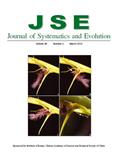Yan HU,Li-Wei SUN,Mokgolodi Neo C.,Yan-Xia ZHANG, Chun-Xiu WEN,Xiao-Liang XIE,Yu-Jun LIU
Unresolved controversies concerning classification of the monotypic genus Perilla L. have hindered the complete understanding and subsequent sustainable use of these vital food, oil and medicinal plants to their full potential. We attempted to use scanning electron microscopy to obtain palynological evidence from Perilla plants of 21 samples from seven provinces in China as a potential extra attribute in classification. The findings showed that pollen grains from plants of 11 samples were oblate, while those of the other 10 were suboblate in shape, and there were no any type of prolate pollen grains being observed. Pollen grains of all the samples had diverse exine ornamentations. Based on whether having continuous tecta on the ornamentations, all of the pollen grains derived from the 21 samples were classified into two categories, fourteen of them with irregular reticulates, seven with continuous tecta with no perforations. None of the samples were bireticulates. The ornamentation pattern and size of pollen grains jointly provided evidence that it is appropriate to classify the genus Perilla into five varieties of one species. Furthermore, by comparison, it is concluded that shapes and exine ornamentations of Perilla are unique among those of the seven genera already investigated in the subfamily Lamioideae. Using these pollen features, Perilla could be easily distinguished from two other subtribes (Menthinae Briq. and Thyminae Briq.) in the same tribe, supporting the view that Perilla and other four related genera were divided into one subtribe (Perillinae).

